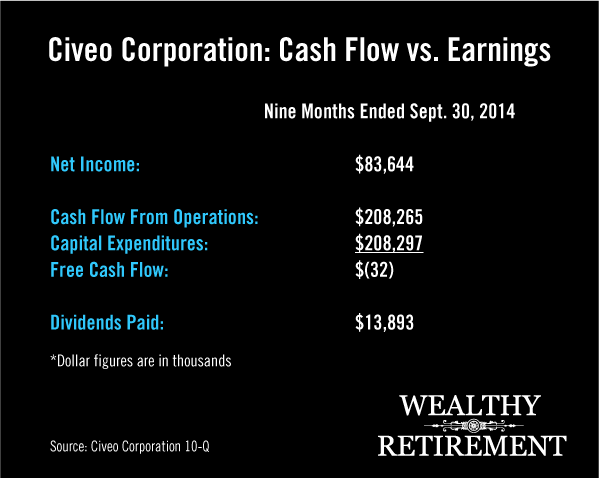 Each Wednesday, I publish the Safety Net, a column where readers ask me to analyze the dividend safety of a particular stock.
Each Wednesday, I publish the Safety Net, a column where readers ask me to analyze the dividend safety of a particular stock.
The main focus of the column is an analysis of the company’s payout ratio based on cash flow.
In fact, if an investor had to determine dividend safety using just one metric, it should be the payout ratio based on cash flow.
Notice that I said cash flow, not earnings.
This is an important difference, and I’ll show you how understanding it could keep you from being misled into thinking a dividend is safe.
[ad#Google Adsense 336×280-IA]What Is a Payout Ratio?
First, let me briefly explain the concept of a payout ratio. It is the percentage of earnings (or cash flow) that is paid out in dividends.
If a company makes $100 million in net income and pays $50 million in dividends, the payout ratio is 50%.
If it pays out $75 million in dividends, the payout ratio is 75%.
Nearly all analysts focus their payout ratio analysis on earnings. I don’t.
Earnings are easily manipulated. A management team can choose to recognize revenue early or late, push expenses forward or back, etc.
Cash flow, on the other hand, measures how much cash a company generates in a period and is much harder to fudge. There are many non-cash items and other variables that go into earnings that are adjusted in cash flow. And when it comes to dividends, we want to know that the cash is there in the company’s coffers and available to be paid out.
For example, a company that is looking to artificially crank up its earnings may offer clients extended credit terms in order to book the sale. The order is placed and the sale is recorded as revenue, but because the customer has 90 days to pay, no cash was actually collected.
The company’s revenue and earnings will rise as a result of the sale, but its cash flow will not. The increase in accounts receivable will nullify the increase in net income.
A Real-Life Example
As you surely know, the energy sector is coming under pressure because of low oil prices. Several oil-related companies recently cut their dividends. A few weeks ago, I mentioned that Linn Energy (Nasdaq: LINE) was at risk.
Last week, the company reduced its dividend by 56%.
Another company that slashed its dividend last week was Civeo Corporation (NYSE: CVEO). The company provides temporary housing to oil workers.
It shouldn’t come as a surprise that as oil prices plummet, oil producers will have less money to spend on things like hiring and housing for workers.
But the company’s payout ratio based on cash flow gave us a sign that things were not stable weeks before the dividend was cut.
In early November, Civeo released third quarter results. Interestingly, it did not include a statement of cash flow in its earnings release. We have to go to the 10-Q document filed with the SEC to get those figures.

You can see that in the first nine months of 2014, the company earned $83.6 million. It paid out $13.9 million in dividends. That gives it a payout ratio of just 16%, which is quite low. I am comfortable with payout ratios as high as 75% for most companies.
If you looked up Civeo’s payout ratio on most financial sites or research databases, you’d get 16%, and would likely feel confident that the dividend is safe, even if business gets tough. After all, it’s paying out only $0.16 for every dollar in earnings. Even if earnings were cut in half, the company could still easily pay the dividend with room to spare.
However, when we look at how much cash Civeo actually generated, alarm bells go off.
Cash flow from operations was an impressive $208.3 million. But capital expenditures, which is how much money the company spent to acquire or improve facilities, was slightly higher than cash flow from operations. So free cash flow (cash flow from operations minus capital expenditures) was negative $32,000.
This means that after running its business and spending money on facilities, the company used $32,000. That’s a big difference from the $83.6 million in profits that was reported.
Now that $13.9 million in dividend payments doesn’t seem nearly as safe when we compare it to negative $32,000.
Just because a company’s free cash flow doesn’t cover the dividend isn’t an automatic sign that a dividend cut is coming, but it should make you pay attention and proceed cautiously.
Knowing that oil services companies are going to have a difficult time in the next few months as producers cut back on their spending, it shouldn’t come as a shock that Civeo’s dividend was cut, especially once you look at the payout ratio based on free cash flow.
When examining a company’s payout ratio, always compare it to free cash flow, not just earnings.
— Marc Lichtenfeld
[ad#IPM-article]
Source: Wealthy Retirement
